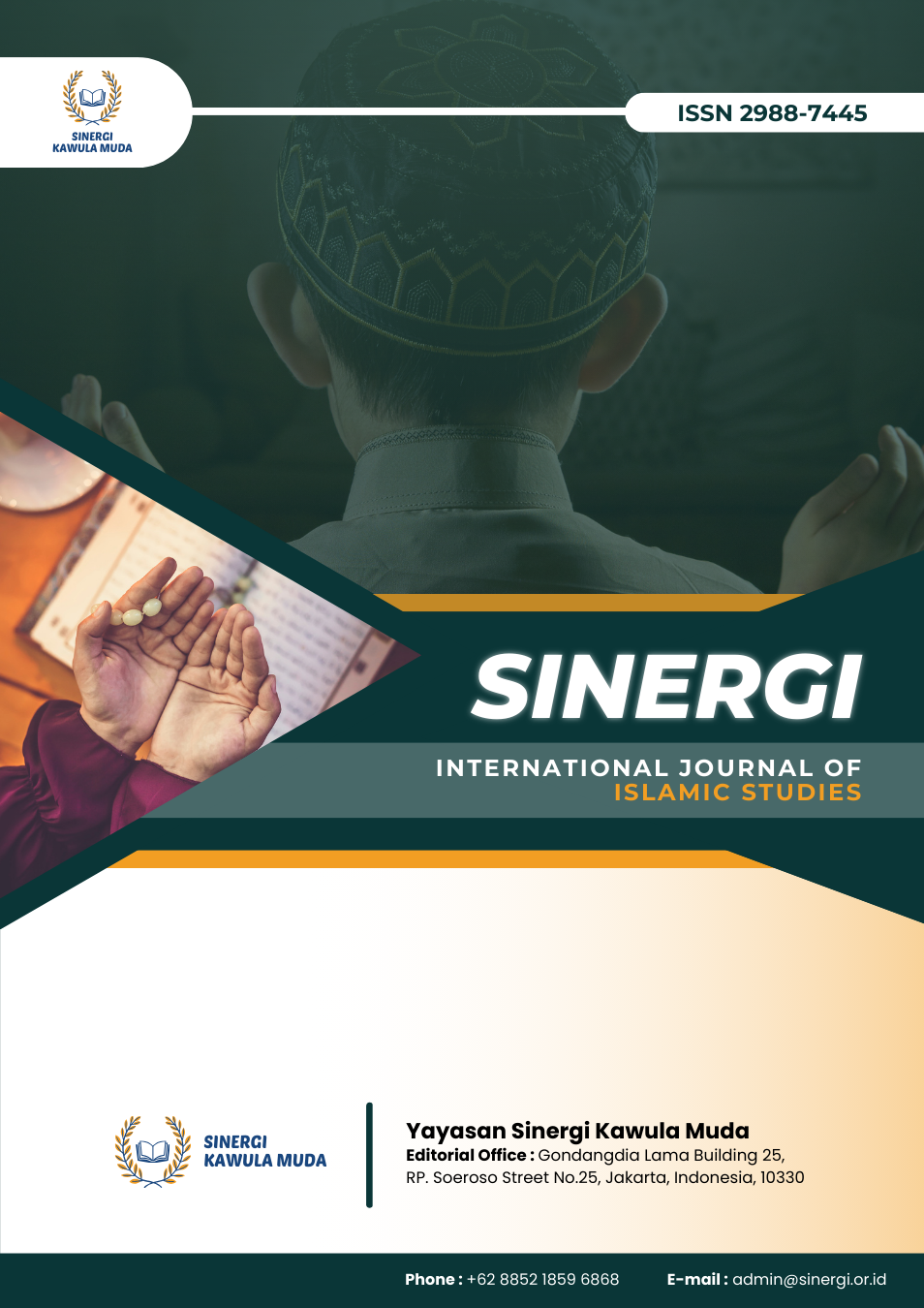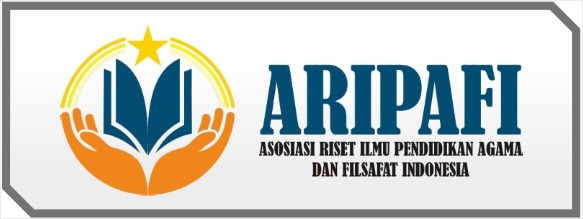Digital Da'wah in the Age of Algorithm: A Narrative Review of Communication, Moderation, and Inclusion
DOI:
https://doi.org/10.61194/ijis.v2i4.706Keywords:
Digital Da'wah, Islamic Communication, Religious Moderation, Social Media Engagement, Algorithmic Transparency, Digital Literacy, Interfaith DialogueAbstract
This study presents a narrative review exploring the transformation of Islamic preaching (da'wah) in the digital age. It aims to synthesize contemporary literature addressing how digital platforms have reshaped religious communication, promoting inclusivity, moderation, and interactivity. The methodology involved reviewing peer-reviewed studies from both local and international contexts, focusing on themes such as digital literacy, visual communication, algorithmic engagement, and institutional strategies. The findings reveal a consistent shift from monologic to dialogic communication, highlighting the effectiveness of media such as video, podcasts, and social media in engaging younger audiences. The review underscores the importance of algorithmic transparency, credible content, and leadership adaptability in shaping trust and message reception. Moreover, systemic factors including digital infrastructure, regulatory support, and socio-economic conditions significantly affect the dissemination and impact of digital da'wah. Interdisciplinary strategies that combine religious values, communication theory, and technology innovation are emphasized as essential for sustainable engagement. This study concludes by recommending stronger regulatory frameworks, investments in digital infrastructure, and inclusive educational policies to overcome current barriers. Future research should explore the long-term social effects of digital da'wah and examine how local cultural elements can be integrated with global communication strategies to foster cohesive religious discourse. The results advocate for a more context-sensitive and ethically grounded approach to digital Islamic communication in the 21st century.
References
Ahmad, J. (2020). Constructing the islamic state: analysing the interplay between media and policy frames in the aftermath of the november 13th 2015 paris attacks. Critical Studies on Terrorism, 13(4), 568-590. https://doi.org/10.1080/17539153.2020.1810987 DOI: https://doi.org/10.1080/17539153.2020.1810987
Alghamdi, E. (2015). The representation of islam in western media: the coverage of norway terrorist attacks. International Journal of Applied Linguistics & English Literature, 4(3). https://doi.org/10.7575/aiac.ijalel.v.4n.3p.198 DOI: https://doi.org/10.7575/aiac.ijalel.v.4n.3p.198
Aljehani, H. (2019). Impact of social media on social value systems among university students in saudi arabia. International Journal of Education and Practice, 7(3), 216-229. https://doi.org/10.18488/journal.61.2019.73.216.229 DOI: https://doi.org/10.18488/journal.61.2019.73.216.229
Arda, B. and Akdemir, A. (2021). Activist communication design on social media: the case of online solidarity against forced islamic lifestyle. Media Culture & Society, 43(6), 1078-1094. https://doi.org/10.1177/0163443720986002 DOI: https://doi.org/10.1177/0163443720986002
Baulch, E. and Pramiyanti, A. (2018). Hijabers on instagram: using visual social media to construct the ideal muslim woman. Social Media + Society, 4(4). https://doi.org/10.1177/2056305118800308 DOI: https://doi.org/10.1177/2056305118800308
Bergersen, S. (2017). Communicating risk. Alternatives Global Local Political, 42(4), 195-210. https://doi.org/10.1177/0304375418770300 DOI: https://doi.org/10.1177/0304375418770300
Briandana, R. and Wan, W. (2020). Da’wah communication and social media: the interpretation of millennials in southeast asia. International Journal of Economics and Business Administration, VIII(Special Issue 1), 216-226. https://doi.org/10.35808/ijeba/543 DOI: https://doi.org/10.35808/ijeba/543
Dalimunthe, M., Pallathadka, H., Muda, I., Manoharmayum, D., Shah, A., Prodanova, N., … & Singer, N. (2023). Challenges of islamic education in the new era of information and communication technologies. HTS Teologiese Studies / Theological Studies, 79(1). https://doi.org/10.4102/hts.v79i1.8608 DOI: https://doi.org/10.4102/hts.v79i1.8608
Daoud, S. (2024). Between religion and politics: the case of the islamic movement in israel. Religions, 15(1), 110. https://doi.org/10.3390/rel15010110 DOI: https://doi.org/10.3390/rel15010110
Eid, M. (2016). Ethics, decision-making, and risk communication in the era of terroredia. International Journal of Technoethics, 7(2), 91-104. https://doi.org/10.4018/ijt.2016070106 DOI: https://doi.org/10.4018/IJT.2016070106
Fakhruroji, M. (2015). Mediatization of religion in “texting culture”: self-help religion and the shifting of religious authority. Indonesian Journal of Islam and Muslim Societies, 5(2), 231-254. https://doi.org/10.18326/ijims.v5i2.231-254 DOI: https://doi.org/10.18326/ijims.v5i2.231-254
Fauzi, F., Abdinagoro, S., Kartono, R., Furinto, A., & Hamsal, M. (2023). Extracting public opinion and popularity of islamic bank in indonesia: a big data of social media and google trends approach. E3S Web of Conferences, 426, 02019. https://doi.org/10.1051/e3sconf/202342602019 DOI: https://doi.org/10.1051/e3sconf/202342602019
Gaikwad, M., Ahirrao, S., Kotecha, K., & Abraham, A. (2022). Multi-ideology multi-class extremism classification using deep learning techniques. IEEE Access, 10, 104829-104843. https://doi.org/10.1109/access.2022.3205744 DOI: https://doi.org/10.1109/ACCESS.2022.3205744
Halverson, J., Ruston, S., & Trethewey, A. (2013). Mediated martyrs of the arab spring: new media, civil religion, and narrative in tunisia and egypt. Journal of Communication, 63(2), 312-332. https://doi.org/10.1111/jcom.12017 DOI: https://doi.org/10.1111/jcom.12017
Hasanah, U., Anam, K., & Muassomah, M. (2024). Modernising tradition: reinforcing aswaja al-nahdhiyah authority among millennials in indonesia. HTS Teologiese Studies / Theological Studies, 80(1). https://doi.org/10.4102/hts.v80i1.9425 DOI: https://doi.org/10.4102/hts.v80i1.9425
Hefner, C. (2022). Morality, religious authority, and the digital edge. American Ethnologist, 49(3), 359-373. https://doi.org/10.1111/amet.13088 DOI: https://doi.org/10.1111/amet.13088
Herfroy-Mischler, A. and Barr, A. (2018). Jihadist visual communication strategy: isil’s hostage executions video production. Visual Communication, 18(4), 519-548. https://doi.org/10.1177/1470357218803396 DOI: https://doi.org/10.1177/1470357218803396
Hoffmann, T. and Larsson, G. (2013). Muslims and the new information and communication technologies. https://doi.org/10.1007/978-94-007-7247-2 DOI: https://doi.org/10.1007/978-94-007-7247-2
Indainanto, Y., Dalimunthe, M., Sazali, H., Rubino, R., & Kholil, S. (2023). Islamic communication in voicing religious moderation as an effort to prevent conflicts of differences in beliefs. Pharos Journal of Theology, 104(4). https://doi.org/10.46222/pharosjot.104.415 DOI: https://doi.org/10.46222/pharosjot.104.415
Kadir, K., Ashaari, N., & Salim, J. (2018). Credibility dimensions for islamic information in social media. International Journal on Advanced Science Engineering and Information Technology, 8(5), 1864-1872. https://doi.org/10.18517/ijaseit.8.5.6434 DOI: https://doi.org/10.18517/ijaseit.8.5.6434
Kamali, M. (2012). Multiple modernities and mass communications in muslim countries. Global Media and Communication, 8(3), 243-268. https://doi.org/10.1177/1742766512459121 DOI: https://doi.org/10.1177/1742766512459121
Kramer, M. (2021). Plural media ethics? reformist islam in india and the limits of global media ethics. Dialectical Anthropology, 45(3), 275-296. https://doi.org/10.1007/s10624-021-09626-5 DOI: https://doi.org/10.1007/s10624-021-09626-5
Lemke, T. and Habegger, M. (2017). A master institution of world society? digital communications networks and the changing dynamics of transnational contention. International Relations, 32(3), 296-320. https://doi.org/10.1177/0047117817747666 DOI: https://doi.org/10.1177/0047117817747666
Lengauer, D. (2018). Sharingsemangat taqwa: social media and digital islamic socialities in bandung. Indonesia and the Malay World, 46(134), 5-23. https://doi.org/10.1080/13639811.2018.1415276 DOI: https://doi.org/10.1080/13639811.2018.1415276
Miftakhuddin, M. (2020). Pengembangan model pendidikan agama islam dalam membentuk karakter empati pada generasi z. Jurnal Pendidikan Agama Islam, 17(1), 1-16. https://doi.org/10.14421/jpai.2020.171-01 DOI: https://doi.org/10.14421/jpai.2020.171-01
Millie, J. (2013). The situated listener as problem: ‘modern’ and ‘traditional’ subjects in muslim indonesia. International Journal of Cultural Studies, 16(3), 271-288. https://doi.org/10.1177/1367877912474536 DOI: https://doi.org/10.1177/1367877912474536
Muchtar, N. and Ritchey, J. (2014). Preaching, community, and convergence: use of old and new media by progressive indonesian islamic leaders. International Communication Gazette, 76(4-5), 360-376. https://doi.org/10.1177/1748048514524099 DOI: https://doi.org/10.1177/1748048514524099
Naeem, M. (2019). Understanding the role of social networking platforms in addressing the challenges of islamic banks. The Journal of Management Development, 38(8), 664-680. https://doi.org/10.1108/jmd-04-2019-0107 DOI: https://doi.org/10.1108/JMD-04-2019-0107
Nasih, A., Darwis, D., & Hamid, A. (2023). Countering islamic radicalism among indonesian university students: an investigation on social media using line official account. Journal of Al-Tamaddun, 18(1), 179-192. https://doi.org/10.22452/jat.vol18no1.15 DOI: https://doi.org/10.22452/JAT.vol18no1.15
O’Loughlin, B., Vaccari, C., Ozgul, B., & Dennis, J. (2017). Twitter and global political crises. Middle East Journal of Culture and Communication, 10(2-3), 175-203. https://doi.org/10.1163/18739865-01002006 DOI: https://doi.org/10.1163/18739865-01002006
Puspitarini, D., Degeng, I., Praherdhiono, H., & Suryati, N. (2023). Humanistic pesantren: systematic literature review and bibliometric visualization analysis on character, moral, and ethical values. Pertanika Journal of Social Sciences and Humanities, 31(2), 465-490. https://doi.org/10.47836/pjssh.31.2.01 DOI: https://doi.org/10.47836/pjssh.31.2.01
Qazi, A., Hardaker, G., Ahmad, I., Darwich, M., Maitama, J., & Dayani, A. (2021). The role of information & communication technology in elearning environments: a systematic review. IEEE Access, 9, 45539-45551. https://doi.org/10.1109/access.2021.3067042 DOI: https://doi.org/10.1109/ACCESS.2021.3067042
Rahman, K. and Emadi, A. (2018). Representations of islam and muslims in new zealand media. Pacific Journalism Review – Te Koakoa, 24(2), 166-188. https://doi.org/10.24135/pjr.v24i2.419 DOI: https://doi.org/10.24135/pjr.v24i2.419
Rahmawati, R. and Febriani, S. (2021). Investigating the problems of learning arabic for islamic universities in the era of covid-19 pandemic. International Journal of Language Education, 5(4), 324. https://doi.org/10.26858/ijole.v5i4.19732 DOI: https://doi.org/10.26858/ijole.v5i4.19732
Rasiam, R., Umiyati, U., Habibullah, H., Syahrir, D., & Said, M. (2023). Integration of new media and prophetic communication enhanced for zakah, infāq, ṣadaqah, and waqf fundraising: a case study of baitulmaal munzalan indonesia. Journal of Islamic Law, 4(1), 28-46. https://doi.org/10.24260/jil.v4i1.1167 DOI: https://doi.org/10.24260/jil.v4i1.1167
Saeed, M. (2021). Newspapers and dynamics of religious communication: the test case of sufi news. Journal of Islamic Thought and Civilization, 11(1), 201-216. https://doi.org/10.32350/jitc.111.11 DOI: https://doi.org/10.32350/jitc.111.11
Sulaiman, A. and Ahmadi, D. (2020). Empowerment communication in an islamic boarding school as a medium of harmonization. Jurnal Komunikasi Malaysian Journal of Communication, 36(4), 323-338. https://doi.org/10.17576/jkmjc-2020-3604-20 DOI: https://doi.org/10.17576/JKMJC-2020-3604-20
Takhim, M., Sonjaya, A., Salim, Z., Rahman, A., Basmar, E., Abdullah, R., … & Ali, M. (2023). The synergy of islamic banks and muslim-friendly tourism: patterns of halal industry development in indonesia. International Journal of Sustainable Development and Planning, 18(9), 2723-2731. https://doi.org/10.18280/ijsdp.180911 DOI: https://doi.org/10.18280/ijsdp.180911
Waheed, A., Yang, J., & Webber, J. (2018). Reinforcing consumers’ impulsive buying tendencies through m-devices and emails in pakistan. Interdisciplinary Journal of Information Knowledge and Management, 13, 045-060. https://doi.org/10.28945/3964 DOI: https://doi.org/10.28945/3964
Wahyuni, P. and Hassan, B. (2015). Iklan produk penjagaan kesihatan di malaysia dan indonesia: sebuah analisis kritis wacana media. Jurnal Komunikasi Malaysian Journal of Communication, 31(1), 221-240. https://doi.org/10.17576/jkmjc-2015-3101-12 DOI: https://doi.org/10.17576/JKMJC-2015-3101-12
Warigon, C., Mkanda, P., Banda, R., Zakari, F., Damisa, E., Idowu, A., … & Vaz, R. (2015). The journalists initiatives on immunisation against polio and improved acceptance of the polio vaccine in northern nigeria 2007–2015. The Journal of Infectious Diseases, 213(suppl 3), S86-S90. https://doi.org/10.1093/infdis/jiv545 DOI: https://doi.org/10.1093/infdis/jiv545
Witro, D. (2020). Maqashid syari’ah as a filter of hoax through al-quran perspective. Jurnal Ilmiah Al-Syir Ah, 18(2), 187. https://doi.org/10.30984/jis.v18i2.1133 DOI: https://doi.org/10.30984/jis.v18i2.1133
Yusof, N. (2016). The credibility of islamic religious institutional websites in malaysia. Jurnal Komunikasi Malaysian Journal of Communication, 32(2), 82-104. https://doi.org/10.17576/jkmjc-2016-3202-05 DOI: https://doi.org/10.17576/JKMJC-2016-3202-05






